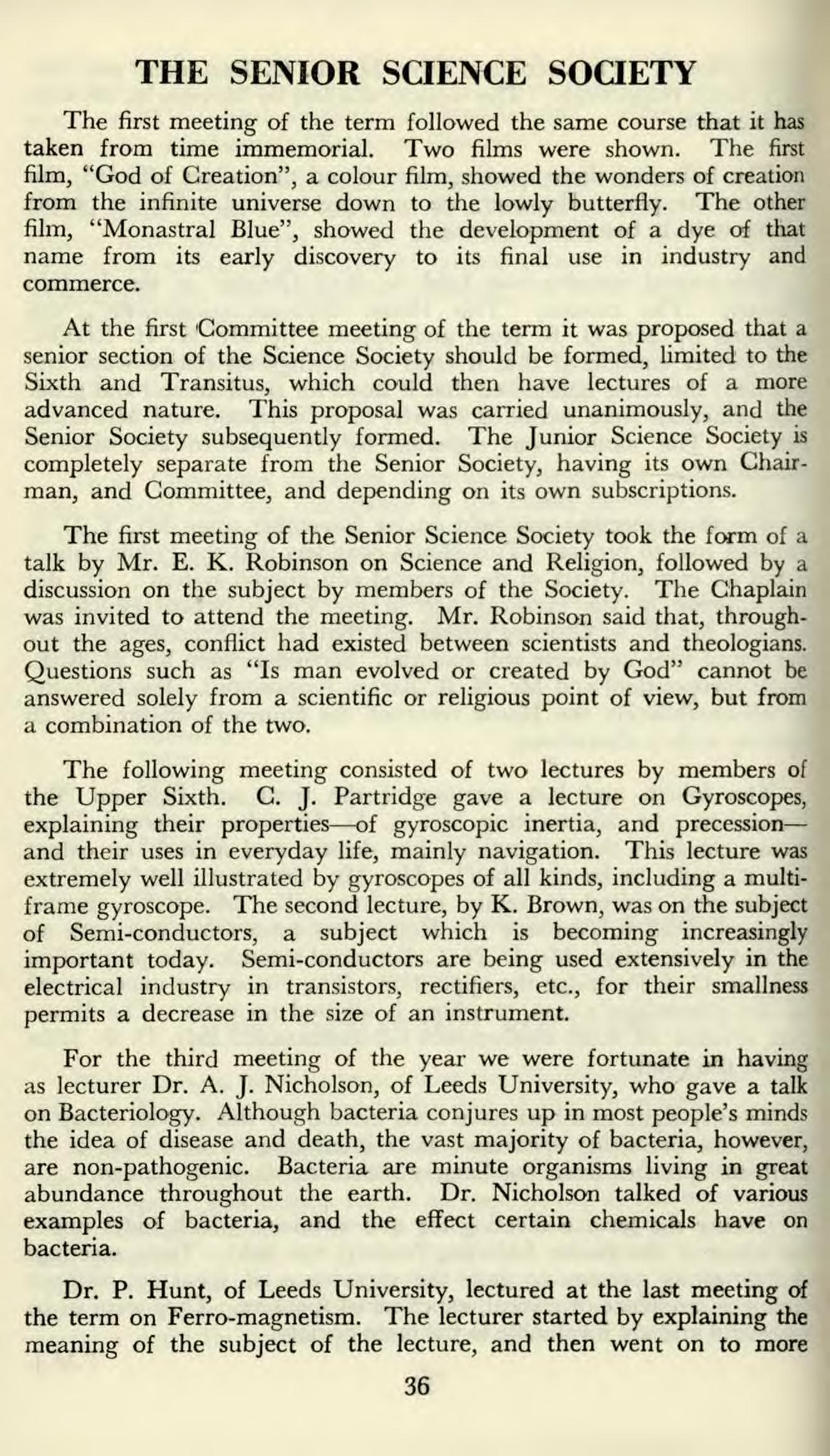
2 minute read
The Senior Science Society
from Feb 1958
by StPetersYork
The first meeting of the term followed the same course that it has taken from time immemorial. Two films were shown. The first film, "God of Creation", a colour film, showed the wonders of creation from the infinite universe down to the lowly butterfly. The other film, "Monastral Blue", showed the development of a dye of that name from its early discovery to its final use in industry and commerce.
At the first Committee meeting of the term it was proposed that a senior section of the Science Society should be formed, limited to the Sixth and Transitus, which could then have lectures of a more advanced nature. This proposal was carried unanimously, and the Senior Society subsequently formed. The Junior Science Society is completely separate from the Senior Society, having its own Chairman, and Committee, and depending on its own subscriptions.
The first meeting of the Senior Science Society took the form of a talk by Mr. E. K. Robinson on Science and Religion, followed by a discussion on the subject by members of the Society. The Chaplain was invited to attend the meeting. Mr. Robinson said that, throughout the ages, conflict had existed between scientists and theologians. Questions such as "Is man evolved or created by God" cannot be answered solely from a scientific or religious point of view, but from a combination of the two.
The following meeting consisted of two lectures by members of the Upper Sixth. C. J. Partridge gave a lecture on Gyroscopes, explaining their properties—of gyroscopic inertia, and precession— and their uses in everyday life, mainly navigation. This lecture was extremely well illustrated by gyroscopes of all kinds, including a multiframe gyroscope. The second lecture, by K. Brown, was on the subject of Semi-conductors, a subject which is becoming increasingly important today. Semi-conductors are being used extensively in the electrical industry in transistors, rectifiers, etc., for their smallness permits a decrease in the size of an instrument.
For the third meeting of the year we were fortunate in having as lecturer Dr. A. J. Nicholson, of Leeds University, who gave a talk on Bacteriology. Although bacteria conjures up in most people's minds the idea of disease and death, the vast majority of bacteria, however, are non-pathogenic. Bacteria are minute organisms living in great abundance throughout the earth. Dr. Nicholson talked of various examples of bacteria, and the effect certain chemicals have on bacteria.
Dr. P. Hunt, of Leeds University, lectured at the last meeting of the term on Ferro-magnetism. The lecturer started by explaining the meaning of the subject of the lecture, and then went on to more 36










